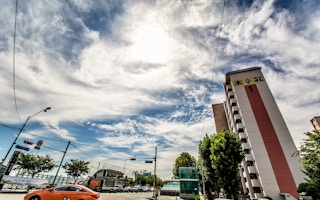This is life in a sustainable city. You weave through other cyclists each morning on a seamless network of cycle tracks that bring you straight to work at a renewable-energy start-up. The air is fresh and light, filtered by native trees and shrubs that line the streets.
Your office is adjacent to a public park that replaced a once-vacant plot of land. It has a popular picnic area that is full of different languages and accents when the weather is dry and a rain garden to absorb excess water from storms. When leaving the office after dark, you can see bright constellations of stars in the sky.
Can you picture this happening in your city? Can you picture it in every city around the world?
For some, the notion of living in a sustainable city can feel vague and distant, a dream of the future. But others are already living in this city or are advancing quickly towards it.
For ICLEI, sustainability is indisputably the necessary path for all city life and operations. Sustainable cities reap the benefits of environmental, social and economic innovation, becoming better equipped to respond to pressing urban challenges, shifting demographic and economic trends, and environmental change. They are designed with people and planet in mind.
Cities, towns and regions across the world join ICLEI to push the boundaries of sustainability and multiply the positive impacts they have on the world. At ICLEI, we envision no less than a world of sustainable cities that go beyond zero waste, are free from fossil fuels, and drive continual innovation in order to protect and enhance life equitably and for all.
A sustainable city goes beyond zero waste to become a productive system, upending the idea that economic growth relies on resource extraction and depletion of finite energy and materials. This city makes the most of existing resources through reuse, sharing, and exchange rather than relying on a continuous path of production and consumption.
In this way, the city restores and enhances natural systems. It also decreases dependence on international resource chains while creating a thriving sharing economy that changes consumption patterns among residents. Imagine a city where organic waste feeds thriving green space and urban gardens and where residents share rather than buy electric cars.
A sustainable city is on the fast track to becoming free from fossil fuels, proving that such dependence is a relic of the past. These cities diversify and modernize mobility and transport, commit to 100 percent renewable energy, and divest from fossil fuels.
Together, these strategies shift the balance of power away from industry. They also open up space for residents and small businesses to decide upon, participate in, and even profit from new energy systems. This is a city where residents sell excess solar power to the grid and can choose to ride biofuel buses or cycle to work.
A sustainable city is also a hub of economic, social and environmental innovation. These innovations, driven by local governments and residents, have the potential to transform nearly every aspect of urban life and city operations.
Innovation in a sustainable city means building a local economy that is brimming with green jobs. That process is supported by skills development and training, encouraging entrepreneurship, and employing smart ways of collecting data and translating it into innovative policy and action.
An innovative city also maps vulnerabilities and risks with data generated by residents. And it provides incubator space for start-up businesses of all kinds.
“
A sustainable city is on the fast track to becoming free from fossil fuels, proving that such dependence is a relic of the past.
Unique assets
The net effect is that sustainable cities ultimately protect and enhance daily life for all residents.
It is not easy for cities to achieve this vision. It takes myriad small steps to achieve big goals. Yet cities are already making progress and committing to bold action.
The world is past the point of questioning whether sustainable urban development is essential. It is clear that we need sustainable cities, and we are increasingly aware of the figures that support this vision: Cities represent more than two-thirds of the global economy and 70 percent of global greenhouse-gas emissions. Over half the global population lives in cities, a figure that will rise to two-thirds by 2050.
We are quickly approaching the Habitat III conference in Quito, where nations will define the course of urbanization for the coming decades. Now is the time to ensure the New Urban Agenda — the conference’s outcome strategy — equips the world to create truly sustainable cities that meet our ambitious vision.
At ICLEI, we are well aware that cities have unique assets, with the potential to shift the trajectory of global development. The New Urban Agenda must therefore reinforce these assets to globalize the sustainable city and its concomitant benefits, with a particular focus on the following three areas.
Ambitious leaders: Sustainable cities have ambitious leaders who push the envelope of sustainability. They communicate a clear vision for their city and ensure that sustainability becomes the norm in daily life and discourse.
Curitiba, Brazil, stands out with a widely recognized tradition of sustainability and transport innovation brought about by visionary planning by Mayor Jaime Lerner in the 1960s. This legacy has continued under the leadership of Mayor Gustavo Fruet, who is advancing transport innovation as part of his own vision to continuously improve quality of life in the city.
The City of Seoul, South Korea, also is widely recognized as a pioneer in urban sustainability. Mayor Park Won Soon, who is also president of ICLEI, envisions a “new urbanization” that fights climate change, achieves energy self-reliance, and allows people and nature to coexist.
Under his leadership, Seoul is creating a thriving sharing city. It is also avoiding 10 million tonnes of greenhouse-gas emissions by 2020 through its “One Less Nuclear Power Plant” programme. The initiative sought to reduce energy consumption equivalent to one nuclear power plant — a goal that was reached before the project moved into a second phase.
Through the New Urban Agenda, nations must make room for ambitious leaders to be visible and engaged, advocating and shaping policies and mechanisms that enable cities to act on their ambitions.
Skilled staff: Sustainable cities can exist only with skilled government staff members who know precisely how to achieve the ambitions of city leaders. They understand the technical, natural and social systems that underlie everyday life in their cities, and can deliver interventions that will change the course of development.
Deborah Roberts of eThekwini municipality in Durban, South Africa, is one such example. As head of environmental planning and climate protection and Durban’s first chief resilience officer, she has invigorated biodiversity and community-based adaptation as a central part of urban planning. Ultimately, the aim is to bring together people and ecosystems in a way that creates jobs and alleviates poverty.
In 2011, Roberts helped rally more than 100 local governments around urban adaptation by bringing the Durban Adaptation Charter for local governments to the international climate talks that year. Most recently, in 2015, she was elected as co-chair of the Intergovernmental Panel on Climate Change (IPCC) Working Group II on Adaptation, as the first scientist with an urban practice background to take on this global role.
The New Urban Agenda must ensure that cities receive adequate funds to hire skilled staff and build their capacity to shape and carry out ambitious programmes and projects.
Strong community and stakeholder engagement: Civil society holds collective knowledge that is full of potential for outside-the-box thinking based on intimate knowledge of daily life in city neighbourhoods. Residents and community-based organizations are sources of ideas, data and feedback, and if leveraged properly, they can become powerful agents of change.
The City of Reykjavík, Iceland, has opened up unused urban space for residents to experiment with potential sustainable uses that support plans to liven public space, enhance creativity and engage residents in designing their own surroundings. Residents receive grants from the city to experiment temporarily with their space to spark discussions around more-permanent use.
At Habitat III, nations must encourage open processes for engaging members of civil society, and empower cities to respond to the demands, ideas and needs they present.
These are the key assets that differentiate cities and make them stand out from the crowd. When all three of these factors are strong, cities can transform themselves — and consequently the rest of the world. Now is the time to globalize the sustainable city and empower cities to lead this change.
Gino Van Begin is secretary general of ICLEI - Local Governments for Sustainability. This story is originally published by Citiscope. Citiscope is a nonprofit news outlet that covers innovations in cities around the world. More at Citiscope.org.


















